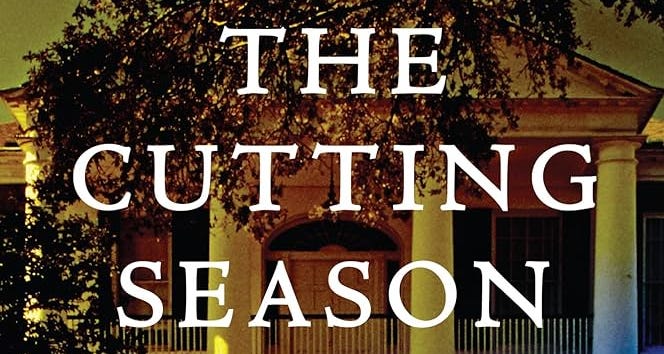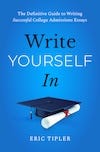Greetings! With the Nov 1 EA/ED deadline approaching, this week we’ll explore how to shorten essays that are over the word count. For a broader overview of the admissions landscape, check out my recent interview on the No Guilt Mom podcast.
Let’s meet in person! Upcoming public appearances 🎙️
Oct 20: Scarsdale Public Library (Scarsdale, NY). Free author talk; details here.
Oct 24: Politics & Prose Bookstore (Washington, DC). Free author talk in conversation with Johnnie Johnson, VP for Enrollment Management at Washington College; details here.
Admissions Q&A: Five Strategies for Cutting
“How do I keep my essays short? I mean the supplements (because the word counts are so small) but also my Common App essay, which is still too long.” - High school senior
Ah, cutting season. Not beach and swimsuit time, but the time of year when students start worrying about how to make sure they’ve said it all and kept their essays under the word count.
Unlike your typical English teacher, who will often let you tack on an extra page or two (if it’s good), the Common App is both strict and precise: a 250-word essay cannot be 251 words. Essay lengths also vary widely. Some are as short as 50 words, while others are as long as 650 (and occasionally more).
That’s why Strunk & White’s “omit needless words” dictum is imperative. With that in mind, here are five tips for trimming down your essays.
1. Look for repeated words & ideas
In many types of writing, it’s a good idea to introduce a concept and then elaborate on it in successive sentences.
For example, look at this passage from a first draft:
When I was 12, I began playing the oboe. Oboe playing was really complicated at first, but I grew to love it over time. Playing the oboe became an important part of my life, a source of meaning but also connection as band became an important community in my life. (50 words)
A bit wordy, but not bad. In a longer essay, you could even elaborate on these ideas: perhaps a sentence describing the initial challenges of learning a new instrument, then two more on how it opened the writer up to meaning and community.
However, this passage also has lots of low-hanging fruit for cutting. Did you notice how the idea “playing the oboe” is repeated three times: twice as-is, and once as “oboe playing”? The word “important” is also repeated twice, and there are two “but”s and two “my life”s in there.
Here is a revised version that cuts over 50% of the words:
Although learning the oboe at age 12 was challenging, over time my instrument became an important source of meaning, connection, and community. (22 words)
See how we trimmed the 3 “playing the oboe”s down to one, omitting a lot of needless words in the process? The main ideas are all still there, just more tightly packaged.
Now you might read that passage and think “But that’s too short!” or “Too dry for a college essay.” And in a sense, you’re right. That edit does omit some nice turns of phrase, particularly “I grew to love it over time,” which added warmth and personality in the original.
That’s why it would be huge mistake to reduce an entire Common App personal essay to terse statements like this one – you’d be cutting out its heart. And yet…the reality is that you’re going to need to cut somewhere.
The key is to use this tool judiciously. In the Common App essay, use it to cut down non-essential parts of the story, both to keep the pace moving and so you’ll have space to slow down and play with words at key emotional turning points.
In a short supplemental essay (e.g. under 150 words), tightly-packed sentences like this one can actually make up the bulk of the essay. With the supplements, concision is your friend.
2. Kill your darlings
As I raced down the soccer field, hair flowing in the wind, my thoughts trailed behind me like a thousand tattered leaves in autumn.
Early draft of college essays are often full of passages like this one: flowery attempts to sound literary.
It’s easy to become attached to pretty prose, but unless it’s used judiciously, it can get in the way of the essay’s mission: showing the writer’s personality and how they would contribute to a college community.
This is where the perennial advice to “kill your darlings” comes in. If you’re struggling with a passage that you love but isn’t moving the narrative forward, it’s usually best to cut it.
Like most things in writing, this is not an absolute rule. For example, highly descriptive prose can be very helpful when you’re setting up a scene or diving into a key turning point. There, description will help you ground the reader in time and place.
But most of the time, flowery prose is best left on the cutting room floor.
3. Let each paragraph do its job
In early drafts of the longer essays, students will often over-explain things, i.e. they make their main point repeatedly, over and over, again and again, multiple times, ad infinitum, sometimes in every paragraph. (See the effect that has?)
It’s not surprising that teenagers do this, because good academic writing – which they’ve been learning for the past 11 years – involves continually tying everything back to your thesis.
However, in personal storytelling, it’s usually better to give each paragraph a job and let it do its thing. For example,
A paragraph where I describe the robotics team when I joined it
A paragraph on challenges in my first year on the team
A paragraph on the moment sophomore year when everything almost fell apart
And so on. The paragraphs do need transitions between them, but they don’t need full explanations of why they’re there and what they mean.
What if you’re not sure what each paragraph should be about? That’s important information, and it’s usually a red flag that your story may be wandering.
When that happens, it can be helpful to stop writing and make a very short outline —like the one above — that lists the main idea of each paragraph. One of my own writing mentors even has a name for this type of post-drafting outline: she calls it a “post-outline.”
Once you’ve made your post-outline, use it to revise your paragraphs one at a time, cutting out any material that doesn’t contribute to the message of that particular paragraph.
The principle of focus also leads to a related point, which is:
4. Save (most of) the reflection for the conclusion
A lot of the “over-explaining” in early drafts is introspective in nature. While a bit of introspection can be useful at turning points, it can also slow down the narrative, taking up valuable real estate that could be better used to show the writer in action, doing things they care about.
In other words: in the body of your essay, “show, don’t tell.”
However, when you cut the introspection from body paragraphs, don’t delete it! Instead, consider putting it in the conclusion. That’s the place to pull up and answer questions like “Why did this matter?” and “What did I learn from it?”
Or, as a former Yale admissions dean once put it, “Tell a story of something you did or that happened to you. Then reflect on what you took away from that experience.”
For more tips on writing a great conclusion, see chapter 4 of Write Yourself In, pages 106 & 116.
5. Emphasize action & response
Once you’ve cut out all the “over-explaining,” what’s left?
As in good journalistic writing (think the New York Times or Washington Post), you want to keep material moves the story forward. This means lots of active verbs, and only including context where it’s needed to effectively tell the story.
If you’re unsure where in the story you can cut (a common problem), try breaking down each step of the narrative into three parts:
Challenge/Goal: What was the challenge or problem you faced, or the goal, dream, or desire you wanted to accomplish?
Action: What did you do to move in the direction of that goal (or solve that problem)?
Response: What happened? Did it work? Did it fail? (Either can work great in a personal essay…as long you’re learning and growing from failures)
Here’s an example of active writing in an effective Common App personal essay. The “challenge,” presented in an earlier paragraph, was that the writer went through his growth spurt late and was in danger of being kicked off his hockey team.
I thought long and hard about what to do. I could have moved down to a less competitive team or quit hockey altogether. But if hockey has taught me anything, it’s that when you’re faced with a challenge, you dig in and work harder. So I began taking more skating lessons, spent more time at the gym, got up at 5:00 a.m. for extra practice sessions…
I struggled, but I stayed on the team, and I stayed competitive.
(Read the full essay on p. 287 of Write Yourself In)
Reading that excerpt, were you able to imagine the writer actually doing these things? That’s what a good essay does for an admissions officer: it helps them imagine the student they might be admitting to their school.
One important caveat: actions do not have to be external! It’s totally fine to show yourself thinking through a problem, asking questions, working your way to an answer or deeper understanding or solution.
What’s important is that you show this happening in action, instead of platitudinously listing beliefs and truisms. Students sometimes try to “give advice” in their essays, but admissions officers do not read these essays looking for life tips from seventeen year olds. They’re typically not that interested in the actual insight you arrived at; what they care about is the process by which you got there.
Have questions about college admissions?
Check out the October 1 issue of Admitted for tips on what parents of 9th, 10th, 11th, and 12th graders should be doing this month to set their kids up for success.
You can also read my new book Write Yourself In from Simon & Schuster for insight into the entire admissions process and step-by-step guidance on all of the essays, or check out the free resources on my website.
And if you’re not a subscriber, join this Substack so you’ll receive my next issue with goals, priorities, and guidance for October.
Last but not least, check out the free admissions resources on my website (worksheets, articles, checklists, and other goodies).
As always, be well and keep in touch!
Eric
Write Yourself In: The Definitive Guide to Writing Successful College Admissions Essays
Available everywhere books are sold





